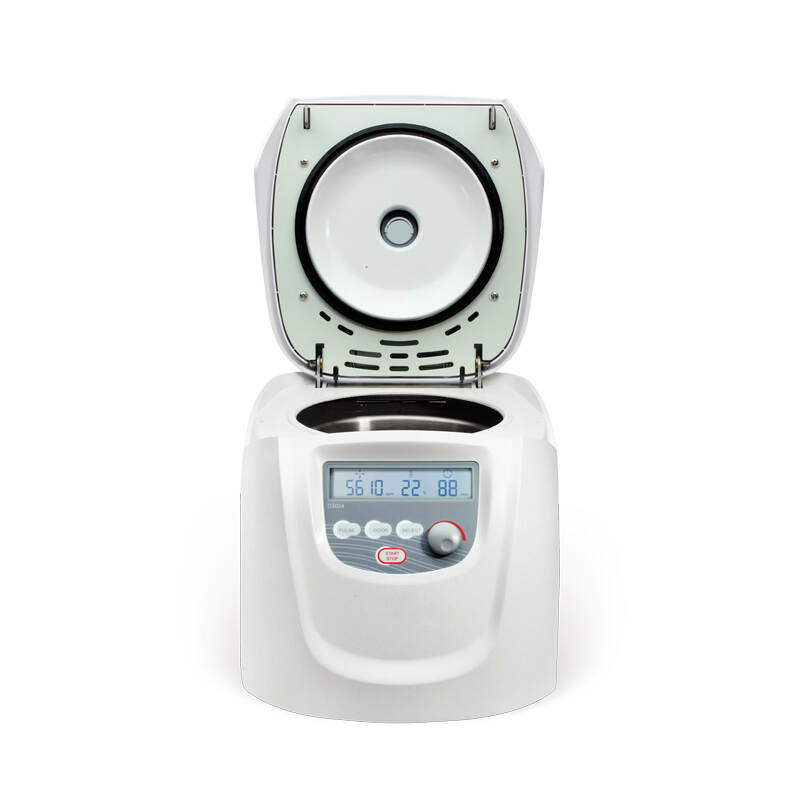Centrifuge Safety: Best Practices and Precautions for Safe Operation
July 25,2023
Centrifuges are powerful laboratory instruments used to separate substances of different densities by spinning them at high speeds. While they are essential tools in many scientific and medical fields, it is crucial to prioritise safety when operating a centrifuge. In this blog post, we will discuss some best practises and precautions to ensure the safe operation of centrifuges.

Familiarise Yourself with the Centrifuge
Before operating a centrifuge, it is essential to read and understand the manufacturer’s instructions and user manual. Familiarise yourself with the different parts of the centrifuge, such as the rotor, lid, and control panel. Ensure that you are aware of the maximum speed and capacity limits of the centrifuge.
Wear Personal Protective Equipment (PPE)
Always wear appropriate personal protective equipment when operating a centrifuge. This includes lab coats, gloves, safety goggles, and closed-toe shoes. PPE will protect you from potential hazards such as broken tubes, chemical spills, or flying debris in the event of rotor failure.
Inspect the Centrifuge and Rotor
Before each use, visually inspect the centrifuge and rotor for any signs of damage or wear. Check for cracks, corrosion, or loose parts. If any issues are found, do not use the centrifuge and report them to the appropriate personnel for repair or replacement.
Balance the Load
Properly balancing the load on the rotor is crucial for safe operation. Imbalanced loads can cause excessive vibrations, leading to rotor failure or damage to the centrifuge. Always use properly sized and matched tubes or containers and distribute them evenly in the rotor.
Secure the Rotor and Lid
Ensure that the rotor is securely fastened to the centrifuge and that the lid is properly closed and locked. Improperly secured rotors or lids can result in accidents, such as the rotor becoming detached during operation. Follow the manufacturer’s instructions for proper installation and locking mechanisms.
Use Appropriate Speed and Time Settings
Always set the centrifuge to the appropriate speed and time settings for the samples being processed. Exceeding the recommended speed or time limits can cause the rotor to fail, leading to potential injury or damage to the centrifuge. Double-check the settings before starting the centrifuge.
Avoid Overfilling Tubes or Containers
Do not overfill tubes or containers beyond their recommended capacity. Overfilled tubes can rupture during centrifugation, causing spills, contamination, or injury. Follow the manufacturer’s guidelines for maximum fill volumes and use appropriate adapters or cushions for smaller sample volumes.
Do Not Open the Centrifuge Immediately After operation
After centrifugation, allow the rotor to come to a complete stop before opening the centrifuge lid. Opening the lid while the rotor is still spinning can result in injury from flying debris or accidental contact with the rotor. Wait for the centrifuge to indicate that it has completed the run and is safe to open.
Clean and Maintain the Centrifuge Regularly
Regularly clean the centrifuge and rotor to remove any spills, debris, or contaminants. Follow the manufacturer’s instructions for cleaning and maintenance procedures. Regular maintenance and inspection will help identify any potential issues and ensure the safe and efficient operation of the centrifuge.
Seek Proper Training and Supervision
Lastly, ensure that you have received proper training on the safe operation of centrifuges. If you are unsure about any aspect of operating the centrifuge, seek guidance from a qualified supervisor or other experienced personnel. Never attempt to operate a centrifuge without proper training and supervision.
In conclusion, following best practises and taking necessary precautions are essential for the safe operation of centrifuges. By familiarising yourself with the equipment, wearing appropriate PPE, balancing loads, and following the manufacturer’s instructions, you can minimise the risk of accidents and ensure a safe working environment in the laboratory.